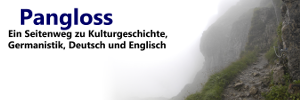Deutsche Beziehungen zum Pazifikraum
Die späte Entdeckung des Pazifikraums durch die Europäer hat dazu geführt, dass Ozeanien auch durch die Literatur und die bildenden Künste erst ab 1780 erschlossen wurde. Besonders die Weltumsegelung James Cooks, die auch Australien und Neuseeland einschloss, begeisterte Deutsche für die Südsee. Wichtig war dabei vor allem Forsters Reisebericht. Seitdem war der Südpazifik ein Sehnsuchtsziel für Reisende, Forscher und Emigranten. Im Kolonialzeitalter tritt Deutschland zunächst als Handelsmacht, dann aber auch als Militärmacht auf. Mit Diplomatie und Druck gelingt es dem Deutschen Reich, sich Kolonien von Mikronesien bis Neuguinea zu verschaffen. In den letzten Jahrzehnten des 20. Jh.s gelangen auch Bewohner des Südpazifikraums ins deutschprachige Europa und überführen ihre Wahrnehmungen in Literatur und Kunst.
The Germans and the South Pacific
As it was discovered relatively late by European explorers, Oceania has been introduced to literature and the visual arts no sooner than in the 1780s. It was James Cook whose travels put Australia and New Zealand on European maps and triggered a wave of enthusiasm for the South Seas. In this context, Georg Forster's travelogue was particularly important. Since then, the South Pacific has become a popular destination for travelers, researchers and emigrants. In the colonial era, Germany established itself as a commercial power in Oceania, and, subsequently, as a military power likewise. With diplomacy and pressure, the German Empire succeeded in acquiring colonies from Micronesia to New Guinea. However, in the last decades of the 20th century, inhabitants of the South Pacific have made their way to Germany, Switzerland and Austria, turning their own perceptions of Europe into literature and art.
Kontext
- Europa
- Süd-, Südost- und Ostasien
- Südamerika
- Ozeanien
- Polarregionen
-
Afrika
- Äquatorialguinea
- Angola
- Benin
- Botswana
- Burkina Faso
- Burundi
- Dschibuti
- Eritrea
- Elfenbeinküste
- Gabun
- Gambia
- Ghana
- Guinea
- Guinea-Bissau
- Kamerun
- Kapverden
- Komoren und Mayotte
- Lesotho
- Liberia
- Libyen
- Madagaskar
- Mali
- Marokko
- Mauretanien
- Mauritius und Réunion
- Mosambik
- Namibia
- Niger
- Ruanda
- Sambia
- Senegal
- Seychellen
- Sierra Leone
- Simbabwe
- Somalia
- Sudan
- Südsudan
- Swasiland
- Tansania
- Togo
- Tschad
- Tunesien
- Uganda
- Westsahara
- Zentralafrikanische Republik
- Nigeria
- Kenia
- Algerien
- Äthiopien
- Kongo, DR
- Kongo, Rep.
- Malawi
- Südafrika
- Ägypten
- Mittelamerika und Karibik
- Vorder-, Mittel- und Zentralasien
- Kolonien und Kolonialismus
